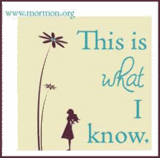Lussier, R.N. & Achua, C.F. (2007). Personality traits and leadership; Chapter 2 Leadership traits and ethics. Leadership: theory, application & skill development. (pp. 30 - 35). Canada: South-Western.
by Rabiatul A. Aziz
Many researches and case studies has raises the issue of the should-be personality and traits of a leader. We do understand not all people are born to be leaders, although it could be developed throughout the years of life. Yet there is a definite distinction of a leader and a follower. Let us understand the definition of personality and traits as the first step. Personality is a person's consistent and stable response to the world (Dalton & Ernst, 2004) or a combination of traits that classifies an individual's behaviour (Lussier & Achua, 2007). Traits are the distinguishing personal characteristics (Lussier & Achua, 2007).
Everybody is born with their individual personality and this could be assessed through designated assessment this can be accessed in Lussier & Achua (2007)
There are five dimensions of traits in the Big Five Model, which are:
Sugency: this includes leadership and extraversion traits. Strong surgency is commonly called dominance, while extraversion is the continuum of extravert and introvert personality. The example of statement of high surgency is:
- I step forward and take charge in leaderless situations
- I enjoy competing and winning
- I an outgoing and willing to confront people when in conflict.
- I want to climb the corporate ladder to as high level of management as I can.
- I am concern of getting along well with other people
- I enjoy having lots of friends and going to the parties
- I try see things from other people's point of view
- I want other people to like me and to view me as very friendly
- I enjoy working with others more than working alone
- I have a good self-control; I dont get emotioanl, angry at all
- I perform well under pressure
- I am an optimistic person who sees the positive side of situations
- I give people lots of praise and encouragement; I don;t put down and critisize.
- I view myself as being relaxed and secure, rather than nervous and insecure.
- I'm dependable; when I say I will do something, its done well on time
- I work hard to be successful
- I am a well-organized person
- I conform by following by following the rules of an organization.
- I am considered to be credible because I do a good job and come through for people.
- I try to things diffeently to improve my performance
- I go to new places and enjoy travelling
- When I go out to a new restaurant, I order food I haven't tried
- I volunteer to be the frst to learn and do new tasks at work
- When people suggest doing things differently, I support them and help them bring it about; I dont make statements like these: "it won't work, we never did it before, no one elese ever did it, or we cant do it".
Not all leaders have strong Big Five Traits, although it is an ideal personality for a successful leaders. Yet, there are few elements that also makes a leader successful, that is by treating people as a valuable assets in an organisation, regardless of its population. Not only that, successful leadership can be achieved by avoiding greed and welcoming change. However, weaknesses in leaders or managers can be a damaging to an organization if not corrected instantly. The following are the six weaknesses that could be found in failed leadership:
- The usage of bullying style portraying intinidation, insensitivity and abrasion
- The traits of being cold, aloof and arrogant
- The betrayal of personal trust
- Self-centered and overly ambitious
- Having specific performance problems in tasks
- Overmanaged and incapable of group delegation or team building.


No comments:
Post a Comment